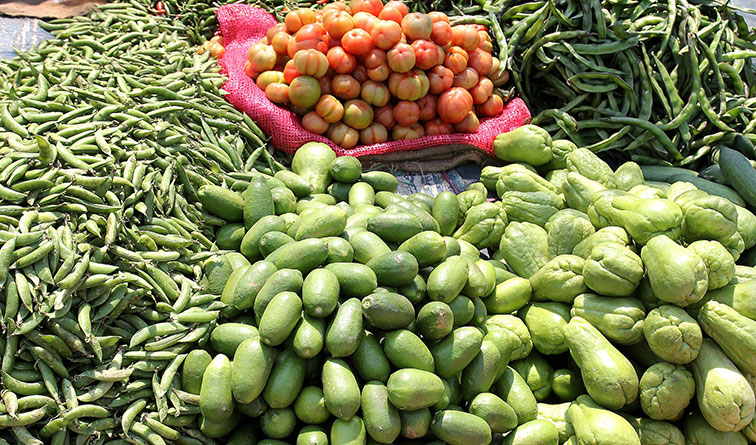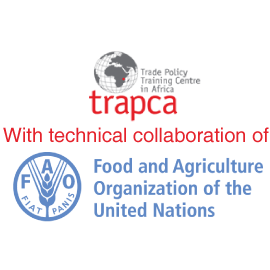
- CAADP Overview: From goals to accountability mechanisms
In 2003, the African Union Assembly of Heads of State and Government adopted the Comprehensive Africa Agricultural Development Programme (CAADP) in Maputo, Mozambique – a Flagship Programme of the African Union (AU) that focused on agriculture and food security. The Maputo Declaration[1] that led to the creation of CAADP set broad targets for the AU members, including, inter alia, 6 percent annual growth in agricultural GDP as well as allocation of at least 10 percent of public expenditures to the agricultural sector. In this regard, National Agricultural Food Security and Investment Plans (NAIPs) were developed in several countries to operationalize the CAADP targets.
A decade after the creation of CAADP, AU Members, while noting its success in raising the profile of agriculture in the national and regional development agendas, recognized the underperformance in NAIP implementation, typically caused by “inadequate funding, lack of appropriate institutions and policies, low leadership capacity and weak mutual accountability systems”.[2] In this context, in 2014, the AU Heads of State and Government adopted the Malabo Declaration on Accelerated Agricultural Growth and Transformation.[3] As part of the refinements and elaboration of the initial 2003 Maputo Declaration, the 2014 Malabo Declaration set out seven commitments: (i) Re-committing to the principles and values of the CAADP process; (ii) Enhancing investment finance in agriculture; (iii) Ending hunger in Africa by 2025; (iv) Reducing poverty by half, by 2025, through inclusive agricultural growth and transformation; (v) Boosting intra-Africa trade in agricultural commodities and services; (vi) Enhancing resilience of livelihoods and production systems to climate variability and other related risks; and (vii) Strengthening mutual accountability to actions and results.[4]
While the Malabo Declaration signaled the intent of AU Members to deliver accelerated growth in agriculture to address poverty and improve food security outcomes, it alone was not to be a panacea for addressing implementation challenges and inefficiencies associated with the Maputo Declaration. As diagnosed in his 2017 report to the AU Assembly, H.E. Paul Kagame noted that while 1,500 resolutions had been adopted by the Assembly, it is difficult to determine how many have actually been implemented, highlighting the need to strengthen enforcement and accountability mechanisms.[5] In January 2018, the African Union Summit recommitted itself to CAADP and the Malabo Declaration. In an important step towards advancing accountability, the Summit launched the African Agricultural Transformation Scorecard (AATS) with an aim to monitor AU Members’ progress in the achievement of their commitments under the Malabo Declaration.[6] The AATS provides for a common set of 43 indicators validated at the continental level, which are reviewed on a biennial basis.[7] The objective of AATS is therefore to ensure, at the minimum, that AU Members are transparent about their efforts to meet their commitments, but more broadly, to foster alignment, harmonization and coordination among multi-sectoral efforts and multi-institutional platforms for peer review, and promote mutual learning and accountability among AU Members.
[1] African Union Commission (2014) Malabo Declaration on Accelerated Agricultural Growth and Transformation for Shared Prosperity and Improved Livelihoods https://au.int/sites/default/files/documents/31247-doc-malabo_declaration_2014_11_26.pdf
[2] AUC (2018) Inaugural Biennial Review Report of the African Union Commission on the Implementation of the Malabo Declaration on Accelerated Agricultural Growth and Transformation for Shared prosperity and Improved Livelihoods. Assembly Decision (Assembly/AU/2(XXIII)) of June 2014 – ASSEMBLY OF THE UNION Thirtieth (30th) Ordinary Session 28th – 29th January 2018 Addis Ababa, ETHIOPIA https://au.int/sites/default/files/documents/34698-doc-33640-rp-33640-wd-full_br_report_eng.pdf
[3] Ibid
[4] African Union Commission (2014) Malabo Declaration on Accelerated Agricultural Growth and Transformation for Shared Prosperity and Improved Livelihoods https://au.int/sites/default/files/documents/31247-doc-malabo_declaration_2014_11_26.pdf
[5] H.E. Paul Kagame (2017) THE IMPERATIVE TO STRENGTHEN OUR UNION http://www.rci.uct.ac.za/sites/default/files/image_tool/images/78/News/FInal%20AU%20Reform%20Combined%20report_28012017.pdf at pg.6
[6] Infra 1
[7] Infra 6 at pg. 9
- Structure of the AATS and progress on public investment and agricultural trade indicators
The AATS provides for reporting tools and instruments that serve as a guide for AU members on data collection and analysis for the preparation of the continental biennial report prepared by the AUC. The report provides for forty-three (43) performance indicators for each AU member state to report against, which are organized into seven themes (“Malabo Commitment Areas”), each with several-sub-themes (“Commitment Categories”), which in turn have one or more indicators[1]. As an example, the organization of the trade-related targets are provided below. This notwithstanding, the scorecard has some key indicators against which countries are assessed. The relevant indicators presented in table 1 below represent the benchmark scores against which countries are assessed. It is in this context that the subsequent scores in table 2 and the interpretative narrative should be considered.
Table 1 Targets on Malabo Declaration Commitment Areas
| CAADP Indicators | |||||
| Public agriculture expenditure as share of total public expenditure | Public Agriculture Expenditure as % of agriculture value added | Growth rate of the value of trade of agricultural commodities and services within Africa | Trade Facilitation Index | Domestic Food Price Volatility Index | |
| Malabo Target (target year 2025) | 10% | 19% | 200% | 100 | 7.5% |
| 2016 Target | 33% | 19% | 20% | 10 | Relative |
For the inaugural 2017 Scorecard report, minimum scores were established at the level of the themes, sub-themes, as well as overall implementation of the Malabo Declaration (i.e. an aggregate of themes), against which individual countries’ progress was assessed. For this report, 47 out of 55 AU Members submitted their validated national reports, out of which twenty were reported to be on track in implementing the Malabo Declaration commitments, while the remaining twenty-seven (27) AU Members fell below their commitments.[2] From a regional perspective, regarding Southern Africa, there was 100% submission rate of the report by the 12 assessed countries. In the case of Eastern Africa, there was 67% report submission rate. It is notable however, that in some commitments, in particular, commitment 5 on boosting intra-African Trade in Agricultural commodities, overall, only 29 AU members reported on this commitment.[3] The AUC report to the Summit highlighted the following results in line with the AATS as per table 2 below.
Table 2 ESA Region AAT Indicators
| Region | AATs Indicators (2015 to 2016) | |||
| Public agriculture expenditure as share of total public expenditure/ | Public Agriculture Expenditure as % of agriculture value added | Growth rate of the value of trade of agricultural commodities and services within Africa | Trade Facilitation Index | |
| East Africa | 7.7% | 15.8% | -3.1% | 46 |
| Southern Africa | 5.4% | 25.9% | -15.0% | 51 |
| Africa | 6.7% | 15.1% | 14.8% | 47 |
| 2016 Milestone 10% | 2016 Milestone 19% | 2016 Milestone 20% | Malabo Target: 100 | |
Table drawn and derived from data provided by AUC in its “Inaugural Biennial Review Report of the African Union Commission on the Implementation of the Malabo Declaration on Accelerated Agricultural Growth and Transformation for Shared prosperity and Improved Livelihoods”
Regarding commitment 2 of the Malabo Declaration namely, “enhancing Investment in Agriculture”, AU members are expected to allocate at least 10 percent of annual public expenditures to agricultural sector. However, as part of the key findings of the AU Commission’s “The 2017 progress report to the Assembly” Africa as a whole is found to be falling short of meeting a commitment on enhancing public expenditure in agriculture, with only 10 Members having met this commitment. In the ESA region only three countries have been able to spend at least 10% of their expenditure on agriculture.[4]
When it comes to commitment 5 on Boosting Intra-African Trade in Agriculture Commodities, firstly, it is notable that the AU’s target is to triple intra-regional trade in both agricultural commodities and services by 2025. This commitment highlights a realization by African countries that services make up an important part of agricultural GDP, and such services trade can play a key role in agricultural development. In order to achieve the target of a 200% increase in the volume of intra-African trade in agricultural commodities and services by 2025, the Scorecard targets a 20% annual increase in this metric. For Africa as a whole, this volume increased by 14.9% between 2015 and 2016, with differences by sub-region: decrease of 3% in East Africa and of 15% in Southern Africa, compared with an increase of 42% in Western Africa and 16% in Northern Africa.[5]
In the area of trade facilitation, out of a maximum index score of 100, Africa as a whole scored 35 on progress on trade facilitation of agricultural goods and services. At a sub-regional level, the scores were as follows: Central Africa region scored 9 out of 100, East Africa 46, North Africa 45, Southern Africa 51 and West Africa 30. The RECs ECOWAS, COMESA, EAC, SADC and UMA were reported to be on track with regard to trade facilitation index. These trading blocs were said to have developed institutional mechanisms that have facilitated and promoted trade of agricultural commodities in the continent. This has been through various measures such as harmonization of policies and regulations, promotion of free movement of goods and people, among others.[6] However, it was lagging behind in a commitment on enhancing public expenditure in agriculture.
As for domestic price volatility, which is linked to food security of the continent, the assessment was carried out on a relative basis as against the target set for 2025. In this context, East Africa region scored 5.6% and Southern African 20.8%. Nevertheless, 25 out of 47 countries in the continent were said to be on track thus the continent generally remains susceptible to price shocks which naturally exacerbates food insecurity.
[1] AUC, 2017. Technical Guidelines for preparing Country Biennial Review report on progress made for achieving the Malabo Declaration Goals and Targets. https://www.resakss.org/node/6502
[2] Ibid at pg 7
[3] Inaugural Biennial Review Report of the African Union Commission on the Implementation of the Malabo Declaration on Accelerated Agricultural Growth and Transformation for Shared prosperity and Improved Livelihoods. Assembly Decision (Assembly/AU/2(XXIII)) of June 2014 at 8
[4] Inaugural Biennial Review Report of the African Union Commission on the Implementation of the Malabo Declaration on Accelerated Agricultural Growth and Transformation for Shared prosperity and Improved Livelihoods. Assembly Decision (Assembly/AU/2(XXIII)) of June 2014 at 7
[5] Ibid at pg 11
[6] ibid
- Overall Assessment of Limited Progress Made
The overall assessment made by the AUC in the 2017 report to the Summit[1], shows that progress has been made with regard to a commitment to boost intra-Africa trade in agriculture commodities albeit with significant differences by sub-region. The progress made can be attributed, at least in part, to developments at the regional level where harmonization of policies and regulations, promotion of free movement of goods and people may have facilitated and promoted trade in agricultural commodities. Nonetheless, several constraints limit further progress, such as deficits in hard and soft market and trade infrastructure, which are reflected in the high costs and delays associated with intra-regional trade.
In addition to the constraints highlighted above, policy challenges associated with trade in agricultural products can also contribute to slow progress towards achievement of Malabo targets. As per the inaugural 2017 report, these include unclear and unpredictable trade policies; ineffective implementation of trade agreements; lack of harmonized standards, rules and regulations; restrictive border procedures; poor stakeholder information on markets; and limited access to efficient and affordable value chain and trade finance. There is therefore need to link the agriculture, industrialization and trade policy and investment planning processes, to ensure that they are mutually reinforcing in achieving stated objectives. Meeting commitments under the Malabo Declaration would thus require substantial resources and investments on the part of the AU Members, and the multi-sectoral nature of the constraints identified by the AUC would warrant greater levels of collaboration, both, among countries in Africa, and among the various ministries within a country.
[1] Ibid

